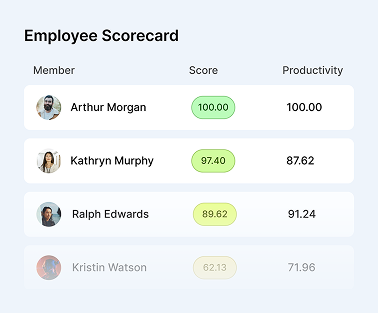In‑Depth Guide: 12 Steps to Automate Your Employee Onboarding Workflow
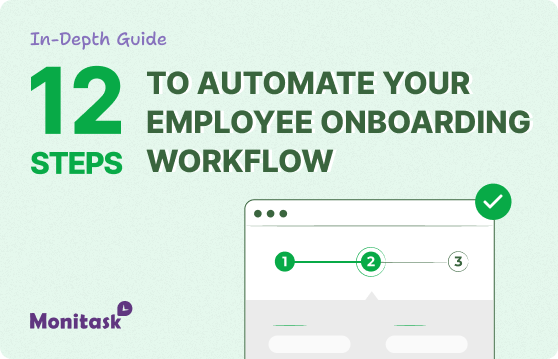
Manual onboarding is a mess waiting to happen. Documents slip through the cracks, tasks get missed, accounts aren’t ready on day one—and the result is a disjointed experience that frustrates HR and underwhelms your new hires. It’s not just inefficient; it’s a bad first impression.
Automation changes that. With the right tools, you can turn a scattered process into a smooth, repeatable system that’s faster, more reliable, and easier to scale.
New employees feel supported from the start, while your HR and IT teams stay focused on the work that really matters.
This guide walks you through exactly how to build an automated onboarding workflow—step by step.
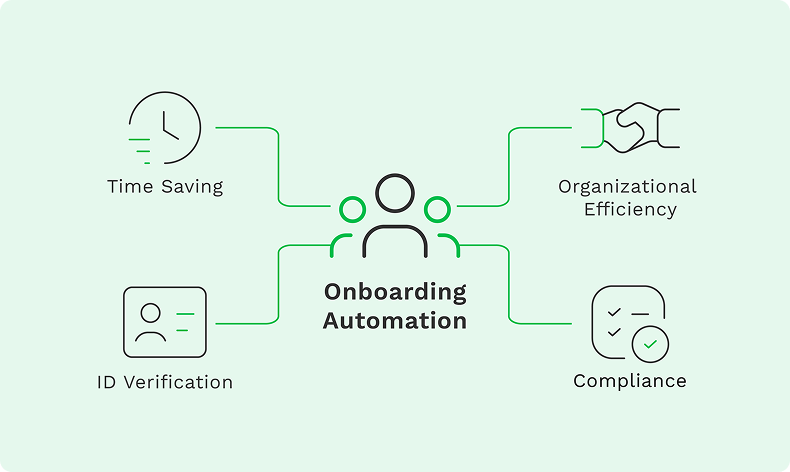
1. Map Out Your Current Onboarding Process
Before you automate anything, you need to understand and document your current onboarding journey from start to finish.
This isn’t just about listing tasks—it’s about visualizing the entire ecosystem of onboarding, including every interaction, stakeholder, dependency, and system involved.
How to do it:
✅ Gather all stakeholders involved in onboarding—HR, hiring managers, IT, payroll, compliance, facilities, etc.—and walk through the onboarding journey together.
✅ Create a flowchart or process map that outlines each step in chronological order, from the moment a candidate accepts an offer to the end of their probation period.
✅ Identify:
- Who is responsible for each step?
- What tools or software are used at each point?
- What communication is required between departments?
- Where do bottlenecks, delays, or frequent errors occur?
✅ Highlight manual, repetitive, or high-risk steps as prime opportunities for automation.
This process mapping exercise also helps uncover redundant tasks or outdated practices that can be removed altogether.
Once documented, this visual becomes the blueprint for building your automated workflow.
2. Choose the Right Onboarding Software
Once you understand your workflow, you need the right software to help automate it.
The right onboarding tool will act as the central hub that connects your various HR systems, streamlines communication, and ensures consistency across the board.
What to look for:
✅ Customizable workflows – Can you build different onboarding flows based on department, location, or role?
✅ E-signature capabilities – For legal documents and compliance forms.
✅ Integration with existing tools – Ensure it integrates with your HRIS (e.g., BambooHR, HiBob), ATS (e.g., Greenhouse, Lever), payroll, IT provisioning tools, and document storage systems.
✅ Automated reminders and task assignments – To keep managers and stakeholders accountable.
✅ Self-service portals – For new hires to complete forms, view tasks, and track progress.
Popular tools include:
Before choosing a platform, run a pilot with one department or team. Test how intuitive it is for both the HR admin and the new hire. Make sure the software allows for role-based customizations and gives visibility to everyone involved.
3. Automate Offer Letter Generation and E-Signing
Manually preparing offer letters is time-consuming, error-prone, and inconsistent.
Automating this step improves turnaround time, ensures legal compliance, and creates a professional experience for candidates—often the very first impression of your organization post-interview.
Here’s how to automate this step:
✅ Use templates with dynamic fields (like candidate name, title, start date, salary, manager, etc.) linked to your ATS or HR system.
✅ Once an offer is approved internally, the system automatically generates the offer letter and routes it for e-signature (via DocuSign, Adobe Sign, or HelloSign).
✅ The candidate receives a personalized, branded offer package in minutes instead of days.
✅ Once signed, the letter is automatically stored in their employee file and HR is notified.
Benefits:
Also consider bundling other pre-employment documents (e.g., NDA, code of conduct, background check authorization) in the same automated workflow to reduce back-and-forth.
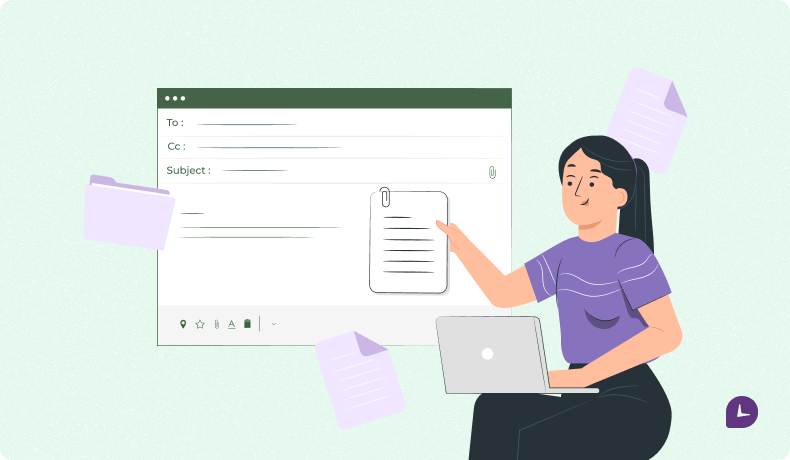
4. Digitize and Automate New Hire Forms
Collecting new hire data manually—like tax info, direct deposit details, and emergency contacts—is inefficient and risky.
Replace paper forms with secure digital forms that can be completed before day one. These forms should be mobile-friendly, legally compliant, and automatically stored in your HRIS.
Set up reminders if forms aren’t completed by a set date. This not only saves time but ensures documentation is accurate and centralized.
5. Set Up Preboarding Automation
Preboarding bridges the gap between offer acceptance and the first day.
Use automation to send personalized welcome emails, provide access to a preboarding portal with company values and logistics, and remind managers to prepare the new hire’s workspace and schedule team introductions.
You can also automate completion of compliance forms or send company swag before they arrive.
These small touches reduce first-day anxiety and help new hires feel part of the team early on.
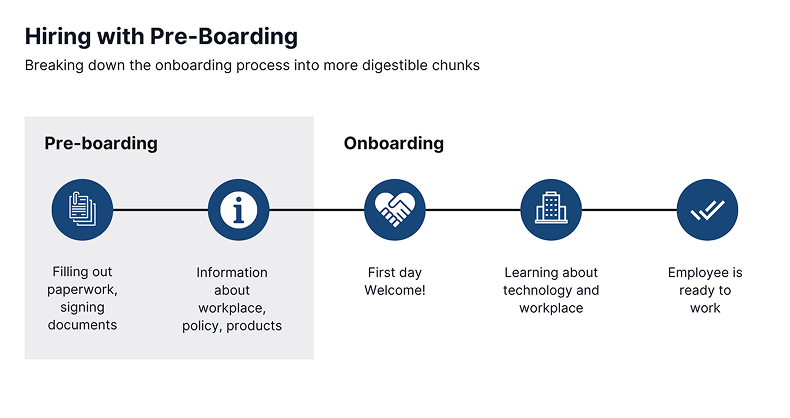
6. Automate IT and Equipment Requests
Waiting on laptops or login credentials is a common onboarding pain point.
Automation ensures that once an employee is marked as hired, the system triggers a request to IT with details like job title, department, and required tools.
Role-specific provisioning templates ensure employees receive exactly what they need, and task trackers help IT stay on schedule.
Notifications can be sent automatically to confirm when equipment has shipped or when accounts have been activated.
7. Build Task Automation for Managers and Stakeholders
Onboarding doesn’t stop with HR—managers, team leads, and other departments play key roles.
Assign onboarding tasks to these stakeholders automatically once a hire is confirmed.
Reminders can prompt them to schedule welcome calls, assign mentors, or complete evaluations.
A shared dashboard helps everyone stay accountable and ensures a cohesive onboarding experience for the new hire.
Maximize productivity of your business
Track employee productivity and simplify work with them
8. Create Automated Onboarding Checklists
Checklists guide new hires through their onboarding journey while ensuring consistency.
An automated checklist generates role-specific tasks and updates in real time as each step is completed.
A good checklist includes:
✅ A progress bar for the employee to track their onboarding.
✅ Embedded links to training materials, forms, or team members.
✅ Automated reminders for overdue items.
✅ Visibility for HR and managers to monitor progress.
This structured approach increases clarity and reduces stress for both the employee and the organization.
9. Automate Internal Notifications and Approvals
Approvals and notifications often delay onboarding. Instead of sending manual emails or chasing signatures, create automated workflows that route tasks to the right person and notify the next in line once an action is completed.
For example, a training plan that requires manager approval can be automatically routed and escalated if not completed in time. This eliminates delays and keeps momentum going.
10. Integrate with Your Learning Management System (LMS)
Training is a critical onboarding element—and it should be streamlined, not siloed. Automatically enroll new hires into required training modules based on their role or department.
Connect your onboarding platform with your LMS so that training progress is tracked, completion certificates are stored, and refresher courses are scheduled when needed.
This ensures compliance and faster time-to-productivity.
11. Schedule Automated Check-Ins and Surveys
Consistent feedback and check-ins are essential for onboarding success. Instead of relying on memory or manual scheduling, automate them.
Set up automated triggers for:
✅ Day 7, 30, and 90-day check-ins between the manager and employee.
✅ Surveys collecting feedback on the onboarding experience.
✅ Alerts if a new hire reports confusion or dissatisfaction.
This keeps communication open, surfaces issues early, and shows employees that their experience matters.
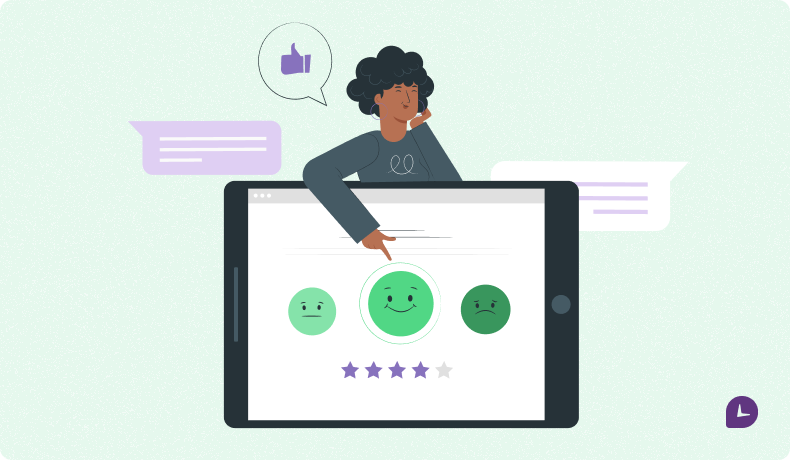
12. Track Metrics and Continuously Optimize
One of the biggest benefits of onboarding automation is data. Monitor task completion rates, training progress, time to productivity, and new hire satisfaction. Use this data to identify bottlenecks and refine your process.
Set up reports and dashboards that show where delays happen most often, which tasks are skipped, or where new hires tend to drop off.
With these insights, you can test and iterate until your onboarding becomes a competitive advantage.
Conclusion: Empower Human Interaction
Onboarding automation doesn’t replace human interaction—it empowers it.
By removing friction and administrative overhead, your team can focus on welcoming, training, and retaining great people.
When implemented thoughtfully, automation creates a consistent, professional experience that builds confidence and momentum from day one.
– The Monitask Team
FAQ: Automating Employee Onboarding
How long does it take to implement onboarding automation?
Typically, 2 to 8 weeks depending on your tools and complexity. Start with high-impact areas like document collection and checklists.
Do I need expensive software to get started?
No. Many affordable platforms like BambooHR, Gusto, or Rippling offer onboarding automation features suitable for small to mid-sized businesses.
Can onboarding still feel personal if it’s automated?
Yes. Use automation for logistics, and save live interactions—like welcome meetings or team intros—for the human touch.
What should I automate first?
Begin with document workflows, IT provisioning, and onboarding checklists. These have the highest impact and are easiest to streamline.
